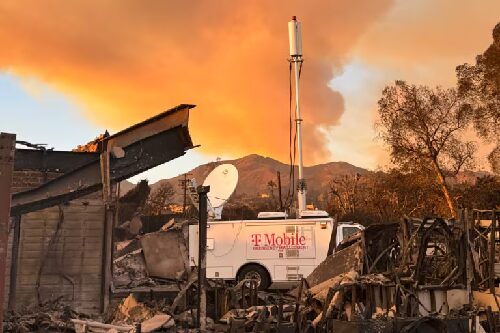T-Mobile Expands Emergency Fleet and Satellite Services for Hurricane Season

T-Mobile has significantly expanded its disaster response capabilities just in time for hurricane season, adding more emergency vehicles, drones, and satellite connectivity options to help keep people connected when storms knock out cell towers.
The carrier’s biggest addition is T-Satellite, which lets you send text messages including emergency 911 texts through satellites when regular cell service goes down. According to T-Mobile’s announcement, nearly 94,000 people used the service to send 287,000 text messages during recent Texas flooding.
T-Mobile has also grown its emergency response fleet substantially. The company increased its drone fleet by 50%, added 30% more mobile cell towers on trucks and trailers, and nearly doubled its satellite antenna units. The drones aren’t just for show either – they include heavy-duty models that can carry 100 pounds of supplies, search and rescue drones with thermal cameras, and tethered drones that stay in the air to create temporary cell coverage bubbles up to two miles wide.
The carrier completed a massive $2 billion network upgrade in Florida this summer, hardening over 1,300 cell towers with backup power and flood protection. This comes as the state prepares for what could be another active hurricane season.
For regular customers, T-Mobile has upgraded its community support vehicles (those Wi-Fi trucks you see after disasters) with better internet connections and more phone charging capacity. The company also uses artificial intelligence to automatically reroute network traffic and manage backup power when storms hit.
T-Mobile’s satellite texting service costs $10 per month or comes free with their top-tier plans. The service works with most modern smartphones without needing special equipment, though you need a clear view of the sky for it to work.
With National Preparedness Month coming up in September, T-Mobile is reminding customers to save emergency contacts, enable emergency alerts, and keep phone chargers in their emergency kits. The company suggests turning on Wi-Fi calling if your internet still works but cell service is down, and keeping calls and texts to a minimum to preserve battery life during emergencies.
